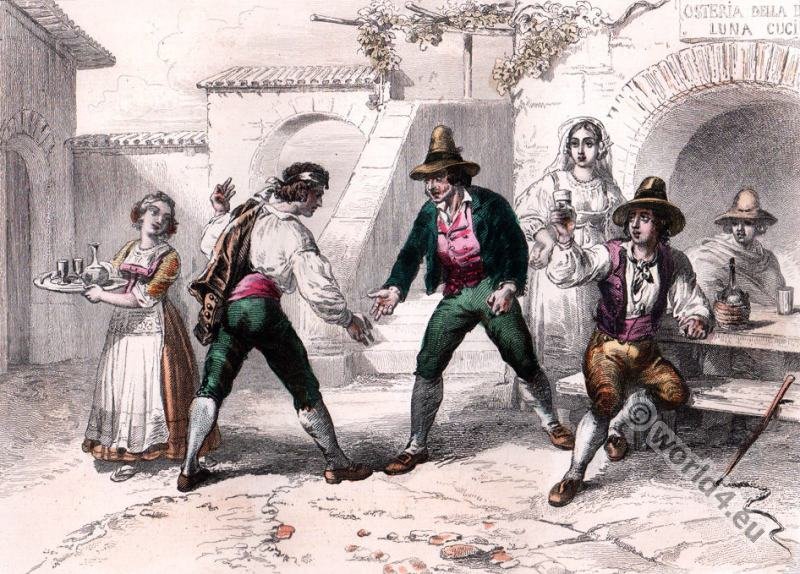CASTEL CANDOLFO.
PLATE XXXVIII.
Castel Gandolfo (also Castelgandolfo, Latin Castrum Gandulphi) in the region of Lazio is known for the papal residence located here, which has served as a summer residence for the popes since the 17th century and has been open to the public as a museum since October 21, 2016.
Castel Gandolfo is located 24 km southeast of Rome in the Alban Hills above Lake Albano, a maar formed in the caldera of an ancient volcano. Castel Gandolfo is counted among the towns of the Castelli Romani and is a member of the association I borghi più belli d’Italia (The most beautiful places in Italy).
At this place is the only country residence possessed by the popes, by whom it has been generally occupied during the autumnal months, when the capital is no longer deemed healthy, and some parts scarcely habitable, from the effects of the mal aria, prevalent at that season of the year.
The view hence over the Campagna is fine, and the air considered salubrious. The villa, placed upon an eminence overlooking the Lago d’Albano, or Castello, is an unadorned, but extensive building; and the interior apartments, occupied by the sovereign pontiff, exhibit the same system of primitive simplicity.
In the gardens of the Villa Barberini, are shown some remains of a palace of Domitian, with its vaulted apartments and niches.
The modern church is a work of Bernini, with a cupola, supported on the inside by Doric pilasters, of which order are also the decorations of the exterior. The altar-piece is a singular mixture of painting and sculpture, from the hand of the same artist. There is also a picture of Carlo Maratti, worthy the observation of the amateur.
Near the town, the spot is imagined where Milo, on his way to Lanuvium, was met by his political adversary, the tribune Clodius, when the affray ensued which proved fatal to the latter, and gave occasion to one of the finest orations of Cicero, in the unsuccessful defense of the survivor; for the glamour of the public alarmed the orator, and prevented his recollecting those arguments which might have saved his friend from banishment and the figs of Marseilles.
Source: Italian scenery from drawings made in 1817 by Elizabeth Frances Batty. London: Published by Rodwell & Martin, 1820.
Discover more from World4 Costume Culture History
Subscribe to get the latest posts sent to your email.







